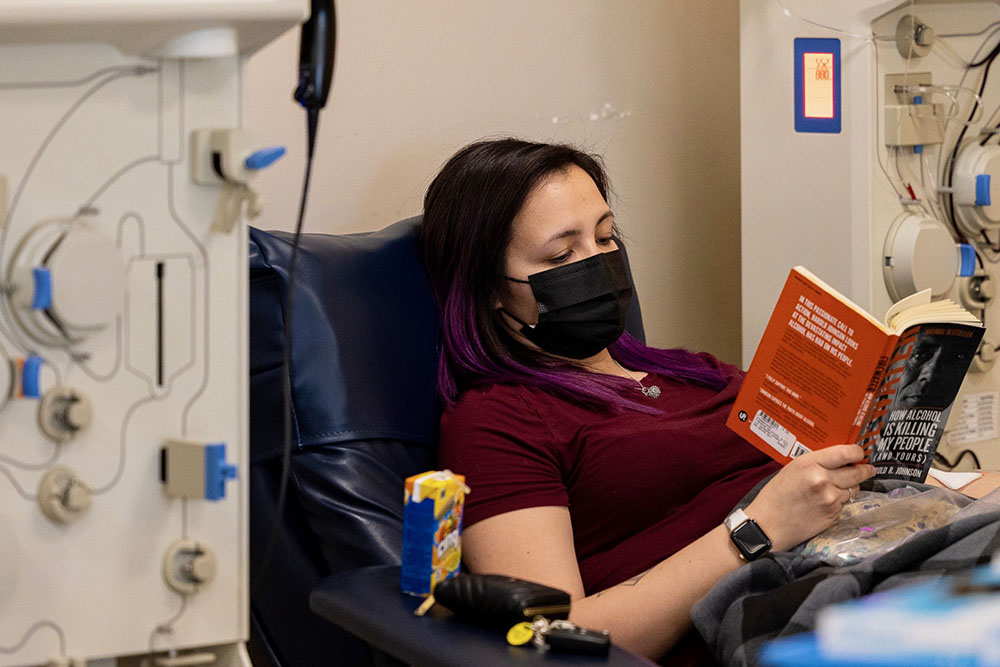Why Donate Plasma Instead of Blood?
March 29, 2022

As someone who may be thinking about becoming a plasma donor, you are probably asking yourself why you should donate plasma instead of blood. Plasma donation and blood donation are both great ways to give back! They are used to save countless lives and help patients in need. But while these processes do have a lot of similarities, they also have quite a few differences that you should know about.
In this blog, we will be going over all the reasons you may want to donate plasma instead of blood.
What Is the Difference Between Blood and Plasma?
Before we delve into all the differences between blood donation and plasma donation, it’s important to first distinguish the difference between these two bodily fluids.
Blood is a constantly flowing reddish fluid that is composed of red blood cells, white blood cells, platelets, and plasma. It circulates throughout your body and delivers oxygen and nutrients to your body’s cells. Blood also helps remove carbon dioxide and other waste materials from your body.
Plasma is the largest part of your blood, and it makes up roughly 55% of its overall content. This yellowish liquid is responsible for several essential functions in the body, including clotting blood and fighting diseases.
What Is the Difference Between Donating Blood and Plasma?
There are quite a few differences between blood donation and plasma donation. The most notable differences include compensation, what they are used for, and the time required for each of these processes.
Here are some reasons why you may want to donate plasma instead of blood:
1. Plasma Donors Can Be Compensated
Unlike blood donations (which are unpaid), paid plasma donations are permitted in some places in Canada and around the world. There are numerous reasons why plasma donors are paid when blood donors are not, some of which include the time commitment that is required of plasma donors and the fact that the only sustainable way to collect enough plasma is through paid donations. In fact, the United States, a country that permits paid plasma donations, supplies two-thirds of the world’s plasma.
At Canadian Plasma Resources, we give our donors the opportunity to earn up to $400/month for their contributions.
2. Plasma Helps Patients with Rare Conditions
Plasma donations are specifically used to treat over 80 different autoimmune diseases, immunodeficiencies, and rare blood disorders. Blood donations, on the other hand, are often used for blood transfusions. Donated blood may also be separated into its individual components and used for other medical purposes.
If you would like to specifically help patients with rare and chronic diseases manage their conditions, plasma donation may be the right choice for you. Source plasma donations bring in three times more plasma than just removing plasma from blood donations, and the patients who receive plasma protein therapies often need these treatments for the rest of their lives. The more source plasma donations that can be made, the better!
3. Plasma Is a Great Way to Get Me-Time
Lastly, plasma donation is a great way to get some me-time! The plasmapheresis portion of the plasma donation process, which involves separating plasma out from other blood components and returning those other components to the body, takes approximately 50 minutes to complete. You can pass the time as you please during these 50 minutes and do things that you normally can’t fit into your schedule, like reading or listening to your favourite podcast!
A whole blood donation usually takes anywhere from eight to 10 minutes to complete.
Even though blood donation and plasma donation are both amazing acts of kindness that can ultimately save lives, there are evidently many reasons why someone may choose to do the latter. If you’re interested in giving back and getting compensated all while enjoying some me-time, book a plasma donation appointment today!









